You are using an out of date browser. It may not display this or other websites correctly.
You should upgrade or use an alternative browser.
You should upgrade or use an alternative browser.
Hubble Space Telescope
- Thread starter Flyaway
- Start date
- Joined
- 21 January 2015
- Messages
- 12,150
- Reaction score
- 16,353
NASA/ESA Hubble Space Telescope celebrates 30 years of science discoveries
On Friday 24 April 2020, the NASA/ESA Hubble Space Telescope celebrates 30 years of science discoveries that have revolutionised nearly all areas of current astronomical research, from planetary science to cosmology, and its countless pictures that are unmistakably out of this world.
With this email we would like to give you a heads up with what ESA is planning. If you would be interested in more information, please do not hesitate to contact us.
Activities planned
- Hubble 30th Anniversary press release to be published on Friday 24 April at 13:00 CEST with a new breathtaking image from the Hubble Space telescope.
- Join us for a live streamed conversation with Hubble experts from around the world to mark the anniversary of the iconic observatory. Guests will reflect on Hubble’s impact on their professional careers, the development of astronomy as a discipline, and the public perception of our Universe. The conversations will take place according to following schedule on ESA Web TV on Friday 24 April:
16:30 CEST - Italian
17:15 CEST - French
18:00 CEST - German
18:45 CEST - Spanish
19:30 CEST - English
- Wish Hubble a Happy Birthday! On April 10th, an announcement was published inviting followers to wish Hubble a Happy 30th birthday by creating a birthday cake, with whatever they have available in the house and to share their cake with images and videos using #Hubble30BDayCake and #Hubble30 on Twitter and Instagram.
- Let’s say thank you to Hubble — Call for Artistic Creations: an announcement with the press release for a call for artistic creations from those aged 3 to 30 from ESA Member States that celebrate and thank Hubble. Artistic work of all kinds - including drawings, paintings, photography, sculptures, and graphic designs - will be welcomed. Inspiration for submissions can include Hubble's 30th birthday, the spacecraft, Hubble's scientific achievements and imagery, or the conception of an anniversary image of their own. Submissions will be made online and a selection of art pieces will be used for dedicated albums on Facebook and Flickr, and future outreach initiatives (including a Hubblecast). We also invite those submitting artwork to share their pieces on social media using #Hubble30Art and #Hubble30.
- Facebook watch party of special anniversary videos on Friday at 15:00-16:30 CEST on https://www.facebook.com/hubbleESA/
ESA/NASA collaboration
Expanding the frontiers of the visible Universe, the Hubble Space Telescope looks deep into space with cameras that can see across the entire optical spectrum from infrared to ultraviolet.
The Hubble Space Telescope (HST) is a 2.4 m-diameter space telescope optimised to observe from the ultraviolet to the infrared, collaborated between ESA and NASA. Launched in 1990 and designed for refurbishment by astronauts, Hubble is one of the greatest scientific projects. Opening our eyes to the wonders of our ‘planetary’ backyard and beyond, it has revolutionised modern astronomy by being an efficient tool for making new discoveries and changing the way research is done.
ESA has been a partner with NASA on the Hubble Mission since its very beginning in 1975. ESA has, among other things, provided the Faint Object Camera (one of the mission’s instruments), the first two sets of solar wings that powered the spacecraft, and a team of space scientists and engineers at the Space Telescope Science Institute (STScI), the Science Operation Centre for Hubble in Baltimore, USA.
Europe's contribution to HST entitles European astronomers to 15% of the telescope's observing time, but in June 2012 European scientists were awarded a record 26.5% of observing time. The European science archive for the Hubble Space Telescope is located at ESA’s European Space Astronomy Centre (ESAC) in Villanueva de la Cañada near Madrid, Spain. Until June 2012 it was hosted by the Space Telescope European Coordinating Facility (ST-ECF), located at the headquarters of the European Southern Observatory near Munich, Germany.
More info: http://www.esa.int/Science_Exploration/Space_Science/Hubble_overview
Hubble fact sheet: http://www.esa.int/Science_Exploration/Space_Science/Hubble_factsheet
Important for the Netherlands
Hubble's third-generation rigid solar array were tested at ESTEC in the Large Space Simulator (LSS) test chamber, which was not available when the earlier European-made Hubble arrays had been constructed. The technicians prepare to disconnect it from the crane. This US array is a third smaller than previous European designs, with no need for flexibility since it is not going to be returned to Earth on a Space Shuttle.
ESTEC, Noordwijk, 23 October 2000. (Hubble Servicing Mission 3B)
More info and image: http://www.esa.int/Enabling_Support...ts_wings_6._Hubble_s_second-generation_arrays
More information on the testing at ESA ESTEC in Noordwijk: http://www.esa.int/Science_Exploration/Space_Science/Hubble_s_solar_arrays_-_behind_the_scenes
Press release from October 2000 announcing testing in ESA ESTEC Noordwijk: http://www.esa.int/Newsroom/Press_Releases/A_Unique_test_for_Hubble_s_new_Solar_Arrays
Image of a Hubble solar array, which flew for 8 years, now exhibited at ESA ESTEC in Noordwijk: http://www.esa.int/ESA_Multimedia/Images/2017/08/Section_of_Hubble_solar_wing
James Webb Space Telescope
Successor to the Hubble Space Telescope, the James Webb Space Telescope (JWST) will help us to find out more about the origins of the Universe by observing infrared light from the youngest galaxies and possibly the first stars. It will show us in detail how stars and planetary systems form and will also allow us to study planets both in our Solar System and those orbiting around other stars.
Mission
The James Webb Space Telescope (JWST) is designed to expand the scientific success of Hubble. Being a 'cool' telescope, JWST is designed to operate at very low temperatures (around -230° C). This will give us an unprecedented view of the Universe at near and mid-infrared wavelengths and will allow scientists to study a wide variety of celestial objects, ranging from planets in the Solar System to nearby stars, from neighbouring galaxies out to the farthest reaches of the very distant Universe. JWST is required to operate for a minimum of five years, planned for ten.
JWST is very big: its primary mirror has an area seven times larger than that of Hubble, which will make it much more sensitive. JWST will combine superb image quality, a large field of view, and a low level of background light with a highly stable environment. All of these characteristics set JWST apart from other existing or planned observatories and will open a new field of scientific discovery.
The James Webb Space Telescope is an international project led by NASA with its partners, ESA and the Canadian Space Agency. As part of its contribution to the project, ESA provides the NIRSpec instrument, the Optical Bench Assembly of the MIRI instrument, the Ariane 5 launcher, and staff to support mission operations at the Space Telescope Science Institute (STScI) in Baltimore, USA.
More info: http://www.esa.int/Science_Exploration/Space_Science/JWST
Further information
More information about ESA: www.esa.int
Images
Terms and conditions for using ESA images: www.esa.int/spaceinimages/ESA_Multimedia/Copyright_Notice_Images
Videos
Terms and conditions for using ESA videos: http://www.esa.int/spaceinvideos/Terms_and_Conditions
On Friday 24 April 2020, the NASA/ESA Hubble Space Telescope celebrates 30 years of science discoveries that have revolutionised nearly all areas of current astronomical research, from planetary science to cosmology, and its countless pictures that are unmistakably out of this world.
With this email we would like to give you a heads up with what ESA is planning. If you would be interested in more information, please do not hesitate to contact us.
Activities planned
- Hubble 30th Anniversary press release to be published on Friday 24 April at 13:00 CEST with a new breathtaking image from the Hubble Space telescope.
- Join us for a live streamed conversation with Hubble experts from around the world to mark the anniversary of the iconic observatory. Guests will reflect on Hubble’s impact on their professional careers, the development of astronomy as a discipline, and the public perception of our Universe. The conversations will take place according to following schedule on ESA Web TV on Friday 24 April:
16:30 CEST - Italian
17:15 CEST - French
18:00 CEST - German
18:45 CEST - Spanish
19:30 CEST - English
- Wish Hubble a Happy Birthday! On April 10th, an announcement was published inviting followers to wish Hubble a Happy 30th birthday by creating a birthday cake, with whatever they have available in the house and to share their cake with images and videos using #Hubble30BDayCake and #Hubble30 on Twitter and Instagram.
- Let’s say thank you to Hubble — Call for Artistic Creations: an announcement with the press release for a call for artistic creations from those aged 3 to 30 from ESA Member States that celebrate and thank Hubble. Artistic work of all kinds - including drawings, paintings, photography, sculptures, and graphic designs - will be welcomed. Inspiration for submissions can include Hubble's 30th birthday, the spacecraft, Hubble's scientific achievements and imagery, or the conception of an anniversary image of their own. Submissions will be made online and a selection of art pieces will be used for dedicated albums on Facebook and Flickr, and future outreach initiatives (including a Hubblecast). We also invite those submitting artwork to share their pieces on social media using #Hubble30Art and #Hubble30.
- Facebook watch party of special anniversary videos on Friday at 15:00-16:30 CEST on https://www.facebook.com/hubbleESA/
ESA/NASA collaboration
Expanding the frontiers of the visible Universe, the Hubble Space Telescope looks deep into space with cameras that can see across the entire optical spectrum from infrared to ultraviolet.
The Hubble Space Telescope (HST) is a 2.4 m-diameter space telescope optimised to observe from the ultraviolet to the infrared, collaborated between ESA and NASA. Launched in 1990 and designed for refurbishment by astronauts, Hubble is one of the greatest scientific projects. Opening our eyes to the wonders of our ‘planetary’ backyard and beyond, it has revolutionised modern astronomy by being an efficient tool for making new discoveries and changing the way research is done.
ESA has been a partner with NASA on the Hubble Mission since its very beginning in 1975. ESA has, among other things, provided the Faint Object Camera (one of the mission’s instruments), the first two sets of solar wings that powered the spacecraft, and a team of space scientists and engineers at the Space Telescope Science Institute (STScI), the Science Operation Centre for Hubble in Baltimore, USA.
Europe's contribution to HST entitles European astronomers to 15% of the telescope's observing time, but in June 2012 European scientists were awarded a record 26.5% of observing time. The European science archive for the Hubble Space Telescope is located at ESA’s European Space Astronomy Centre (ESAC) in Villanueva de la Cañada near Madrid, Spain. Until June 2012 it was hosted by the Space Telescope European Coordinating Facility (ST-ECF), located at the headquarters of the European Southern Observatory near Munich, Germany.
More info: http://www.esa.int/Science_Exploration/Space_Science/Hubble_overview
Hubble fact sheet: http://www.esa.int/Science_Exploration/Space_Science/Hubble_factsheet
Important for the Netherlands
Hubble's third-generation rigid solar array were tested at ESTEC in the Large Space Simulator (LSS) test chamber, which was not available when the earlier European-made Hubble arrays had been constructed. The technicians prepare to disconnect it from the crane. This US array is a third smaller than previous European designs, with no need for flexibility since it is not going to be returned to Earth on a Space Shuttle.
ESTEC, Noordwijk, 23 October 2000. (Hubble Servicing Mission 3B)
More info and image: http://www.esa.int/Enabling_Support...ts_wings_6._Hubble_s_second-generation_arrays
More information on the testing at ESA ESTEC in Noordwijk: http://www.esa.int/Science_Exploration/Space_Science/Hubble_s_solar_arrays_-_behind_the_scenes
Press release from October 2000 announcing testing in ESA ESTEC Noordwijk: http://www.esa.int/Newsroom/Press_Releases/A_Unique_test_for_Hubble_s_new_Solar_Arrays
Image of a Hubble solar array, which flew for 8 years, now exhibited at ESA ESTEC in Noordwijk: http://www.esa.int/ESA_Multimedia/Images/2017/08/Section_of_Hubble_solar_wing
James Webb Space Telescope
Successor to the Hubble Space Telescope, the James Webb Space Telescope (JWST) will help us to find out more about the origins of the Universe by observing infrared light from the youngest galaxies and possibly the first stars. It will show us in detail how stars and planetary systems form and will also allow us to study planets both in our Solar System and those orbiting around other stars.
Mission
The James Webb Space Telescope (JWST) is designed to expand the scientific success of Hubble. Being a 'cool' telescope, JWST is designed to operate at very low temperatures (around -230° C). This will give us an unprecedented view of the Universe at near and mid-infrared wavelengths and will allow scientists to study a wide variety of celestial objects, ranging from planets in the Solar System to nearby stars, from neighbouring galaxies out to the farthest reaches of the very distant Universe. JWST is required to operate for a minimum of five years, planned for ten.
JWST is very big: its primary mirror has an area seven times larger than that of Hubble, which will make it much more sensitive. JWST will combine superb image quality, a large field of view, and a low level of background light with a highly stable environment. All of these characteristics set JWST apart from other existing or planned observatories and will open a new field of scientific discovery.
The James Webb Space Telescope is an international project led by NASA with its partners, ESA and the Canadian Space Agency. As part of its contribution to the project, ESA provides the NIRSpec instrument, the Optical Bench Assembly of the MIRI instrument, the Ariane 5 launcher, and staff to support mission operations at the Space Telescope Science Institute (STScI) in Baltimore, USA.
More info: http://www.esa.int/Science_Exploration/Space_Science/JWST
Further information
More information about ESA: www.esa.int
Images
Terms and conditions for using ESA images: www.esa.int/spaceinimages/ESA_Multimedia/Copyright_Notice_Images
Videos
Terms and conditions for using ESA videos: http://www.esa.int/spaceinvideos/Terms_and_Conditions
FighterJock
ACCESS: Above Top Secret
- Joined
- 29 October 2007
- Messages
- 5,607
- Reaction score
- 5,936
30 Years of the Hubble Space Telescope? Time has certainly flown fast.
- Joined
- 21 January 2015
- Messages
- 12,150
- Reaction score
- 16,353
FighterJock
ACCESS: Above Top Secret
- Joined
- 29 October 2007
- Messages
- 5,607
- Reaction score
- 5,936
Thanks for posting the link Flyaway.
- Joined
- 21 January 2015
- Messages
- 12,150
- Reaction score
- 16,353
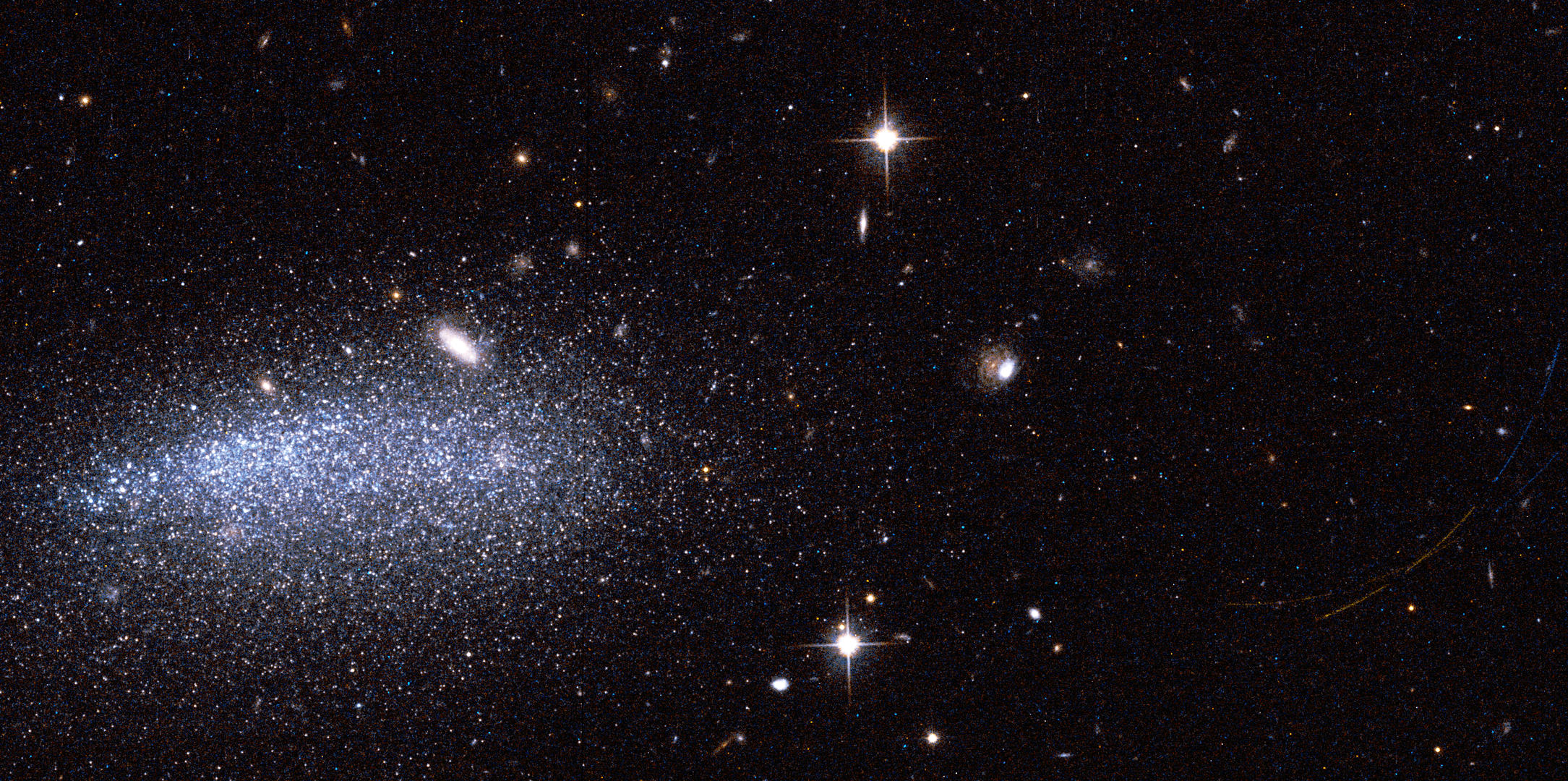
- Joined
- 21 January 2015
- Messages
- 12,150
- Reaction score
- 16,353
HUBBLE SNAPS CLOSE-UP OF COMET NEOWISE [HEIC2015]
21 August 2020
The NASA/ESA Hubble Space Telescope has captured the closest images yet of the sky's latest visitor to make the headlines, comet C/2020 F3 NEOWISE, after it passed by the Sun. The new images of the comet were taken on 8 August and feature the visitor's coma, the fine shell that surrounds its nucleus, and its dusty output.
Comet NEOWISE is the brightest comet visible from the Northern Hemisphere since 1997's Hale-Bopp comet. It's estimated to be travelling at over 60 kilometres per second. The comet's closest approach to the Sun was on 3 July and it's now heading back to the outer reaches of the Solar System, not to pass through our neighbourhood again for another 7000 years.
Hubble's observation of NEOWISE is the first time a comet of this brightness has been photographed at such high resolution after its pass by the Sun. Earlier attempts to photograph other bright comets (such as comet ATLAS) proved unsuccessful as they disintegrated in the searing heat.
ESA Science & Technology - Hubble snaps close-up of comet NEOWISE [heic2015]
The NASA/ESA Hubble Space Telescope has captured the closest images yet of the sky's latest visitor to make the headlines, comet C/2020 F3 NEOWISE, after it passed by the Sun. The new images of the comet were taken on 8 August and feature the visitor's coma, the fine shell that surrounds its...
- Joined
- 21 January 2015
- Messages
- 12,150
- Reaction score
- 16,353
- Joined
- 21 January 2015
- Messages
- 12,150
- Reaction score
- 16,353
ESA Science & Technology - Hubble captures crisp new image of Jupiter and Europa [heic2017]
This latest image of Jupiter, taken by the NASA/ESA Hubble Space Telescope on 25 August 2020, was captured when the planet was 653 million kilometres from Earth. Hubble's sharp view is giving researchers an updated weather report on the monster planet's turbulent atmosphere, including a...
- Joined
- 21 January 2015
- Messages
- 12,150
- Reaction score
- 16,353
- Joined
- 21 January 2015
- Messages
- 12,150
- Reaction score
- 16,353
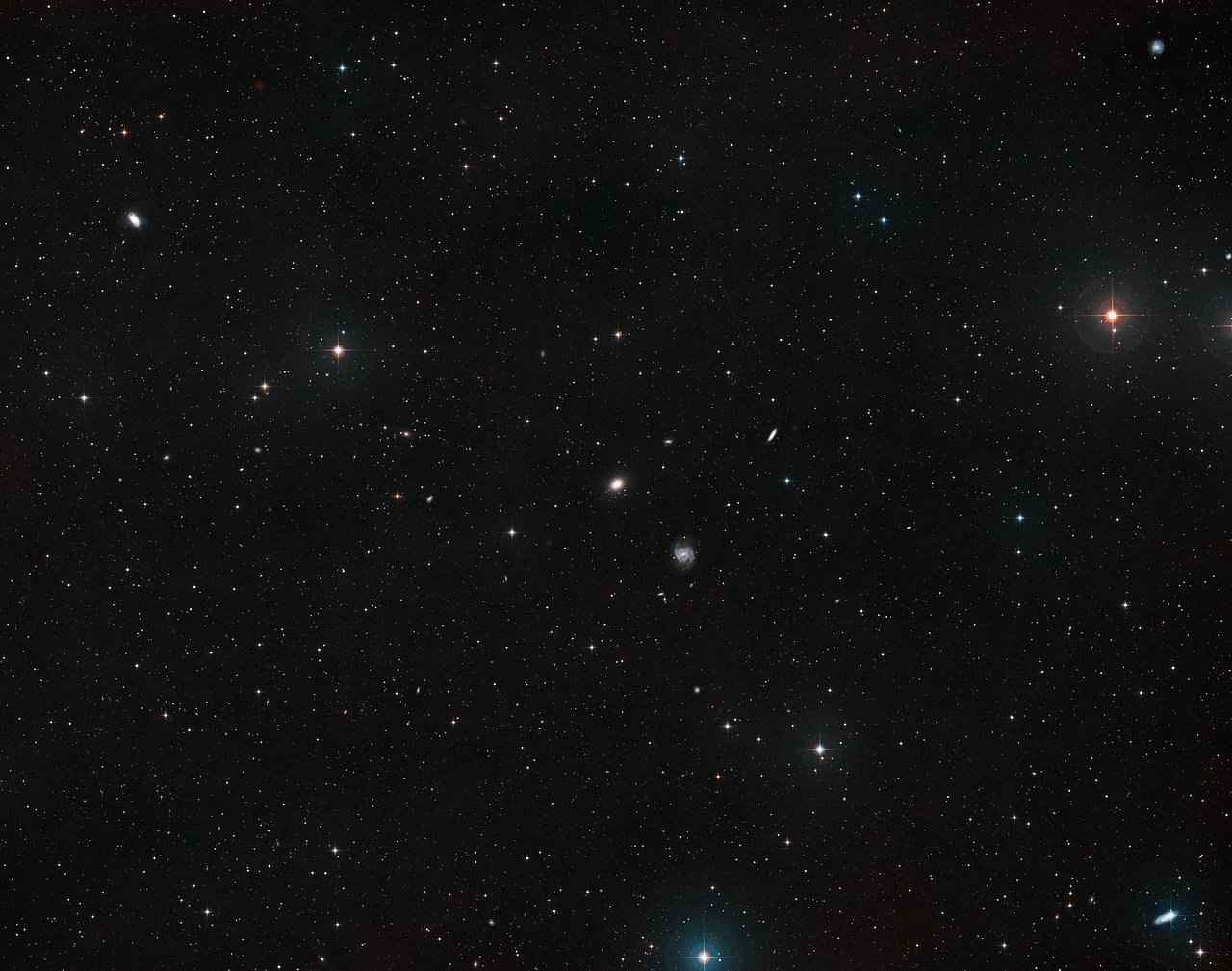
New Hubble Data Explains Missing Dark Matter
New data from the NASA/ESA Hubble Space Telescope provides further evidence for tidal disruption in the galaxy NGC 1052-DF4. This result explains a previous finding that this galaxy is missing most of its dark matter. By studying the galaxy’s light and globular cluster distribution, astronomers...
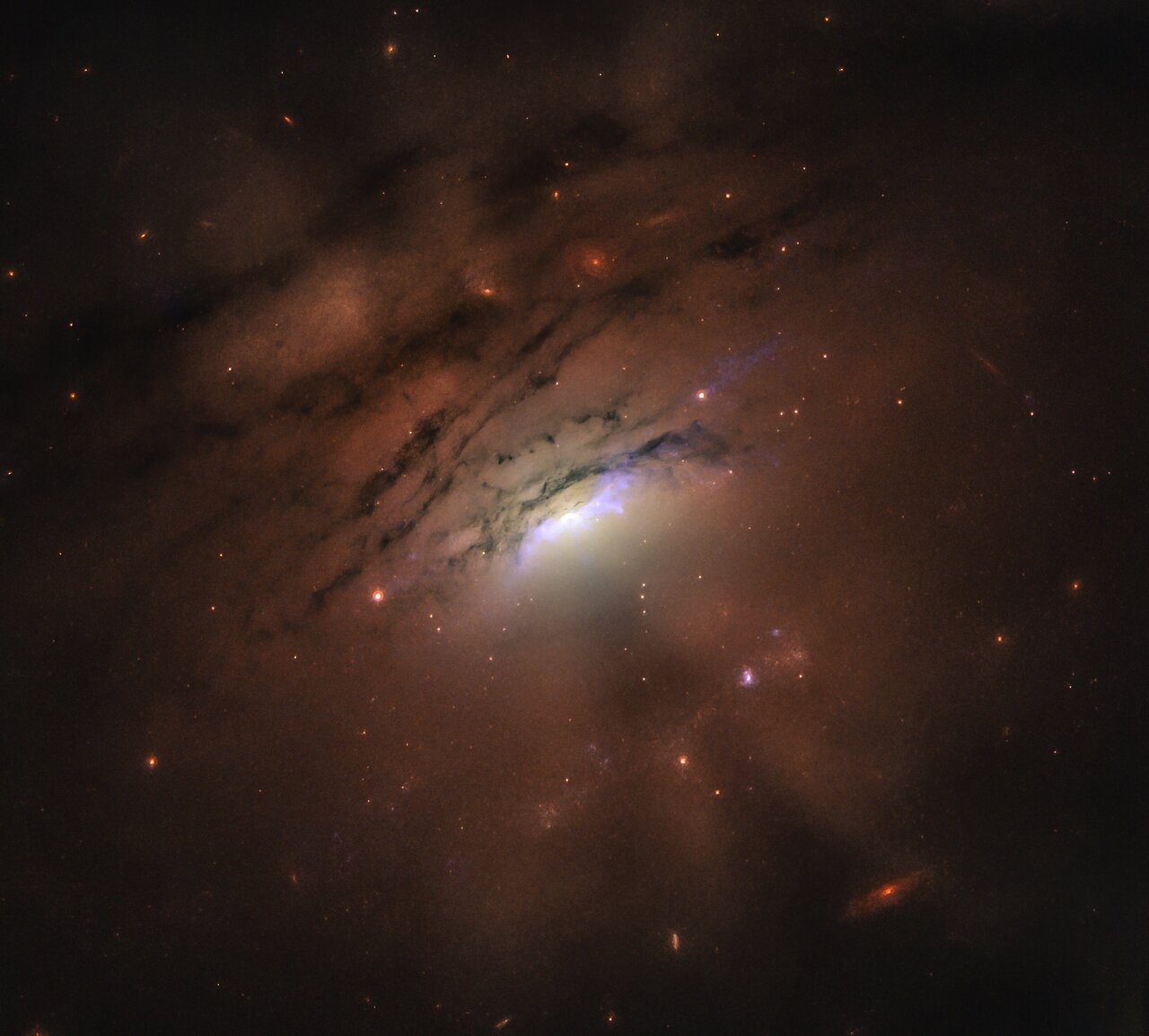
Last edited:
- Joined
- 21 January 2015
- Messages
- 12,150
- Reaction score
- 16,353
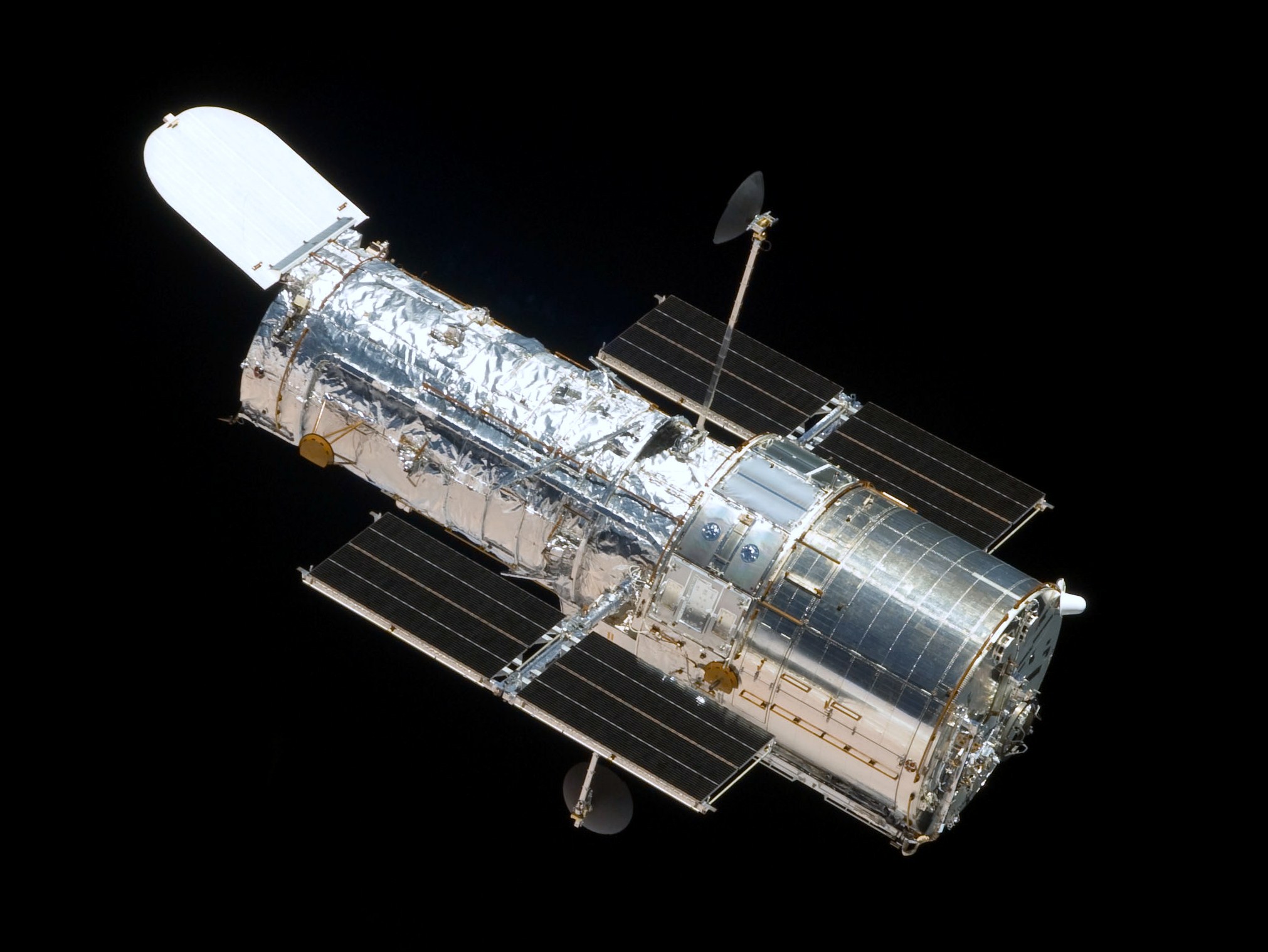
Missing dark matter & shadows from a black hole, Hubble continues to unlock cosmic mysteries - NASASpaceFlight.com
It’s a constant of the universe. Dark matter – a key ingredient for the formation…
- Joined
- 21 January 2015
- Messages
- 12,150
- Reaction score
- 16,353
ESA Science & Technology - Hubble captures fading of the Stingray Nebula [heic2020]
Astronomers have caught a rare glimpse of a rapidly fading shroud of gas around an aging star. Archival data from the NASA/ESA Hubble Space Telescope reveal that the nebula Hen 3-1357, nicknamed the Stingray nebula, has faded precipitously over just the past two decades. Witnessing such a swift...
- Joined
- 21 January 2015
- Messages
- 12,150
- Reaction score
- 16,353
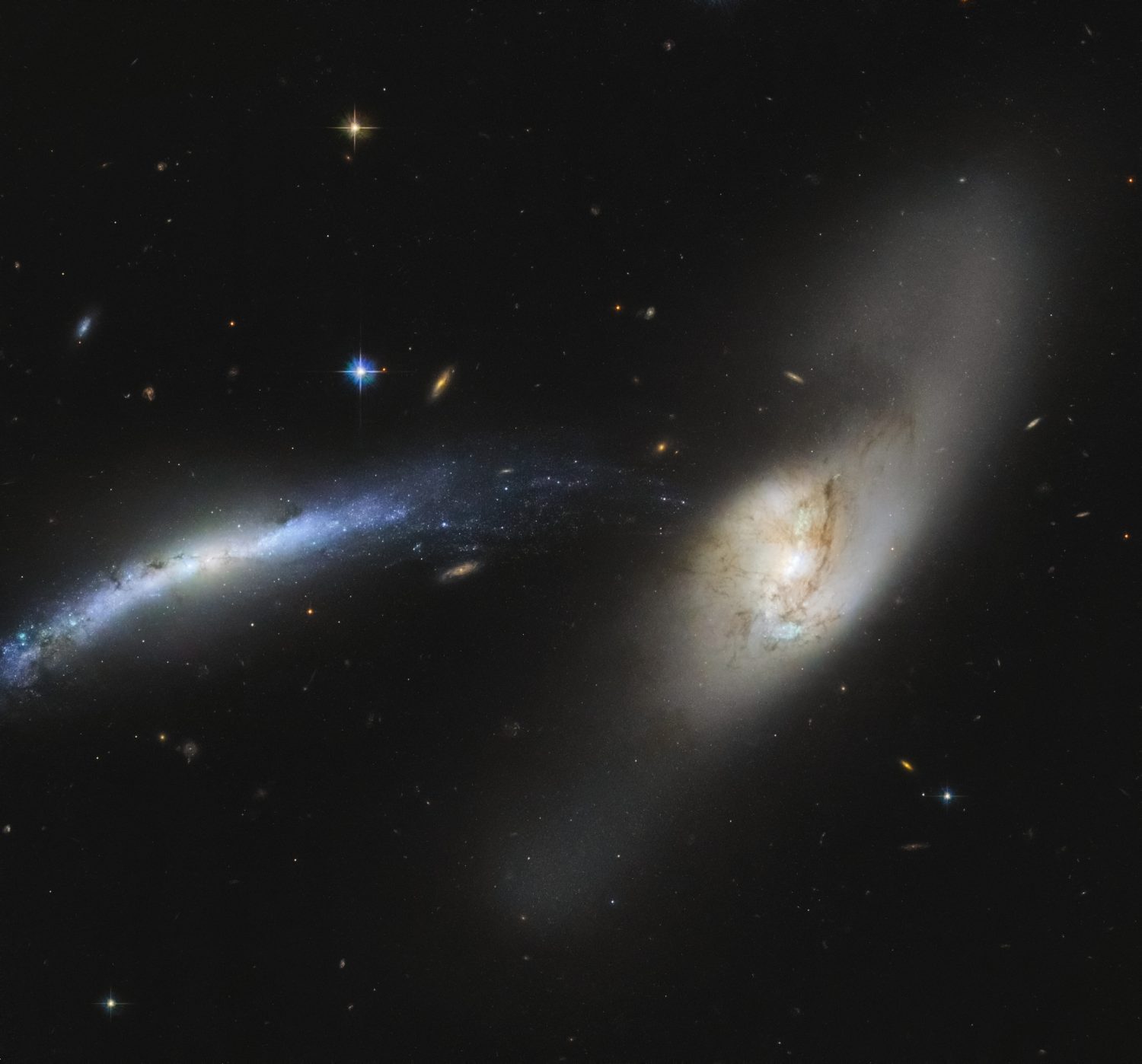
Strange galactic merger captured by Hubble Space Telescope
Stars swirl like water down a plug hole as two galaxies begin a cosmic merger in a newly released Hubble Space Telescope image.
- Joined
- 21 January 2015
- Messages
- 12,150
- Reaction score
- 16,353
Like everyone getting older Hubble isn’t without its issues.

 www.nasa.gov
www.nasa.gov

NASA's Hubble Space Telescope's Wide Field Camera 3 Restored - NASA Science
The Wide Field Camera 3 (WFC3) instrument on NASA’s Hubble Space Telescope was brought back online on Saturday, March 13th at approximately 7:00 p.m. EST. The
FighterJock
ACCESS: Above Top Secret
- Joined
- 29 October 2007
- Messages
- 5,607
- Reaction score
- 5,936
Like everyone getting older Hubble isn’t without its issues.

NASA's Hubble Space Telescope's Wide Field Camera 3 Restored - NASA Science
The Wide Field Camera 3 (WFC3) instrument on NASA’s Hubble Space Telescope was brought back online on Saturday, March 13th at approximately 7:00 p.m. EST. Thewww.nasa.gov
Wonder what the problem was that caused Hubble to go into safe mode? But it is good news that everything is back to normal and Hubble is operating normally now.
- Joined
- 21 January 2015
- Messages
- 12,150
- Reaction score
- 16,353

NASA's Hubble Space Telescope's Wide Field Camera 3 Restored - NASA Science
The Wide Field Camera 3 (WFC3) instrument on NASA’s Hubble Space Telescope was brought back online on Saturday, March 13th at approximately 7:00 p.m. EST. The
- Joined
- 21 January 2015
- Messages
- 12,150
- Reaction score
- 16,353
Hubble Shows Torrential Outflows from Infant Stars May Not Stop Them from Growing:
View: https://youtu.be/rO-mcWsqLaQ
- Joined
- 9 October 2009
- Messages
- 21,973
- Reaction score
- 13,627
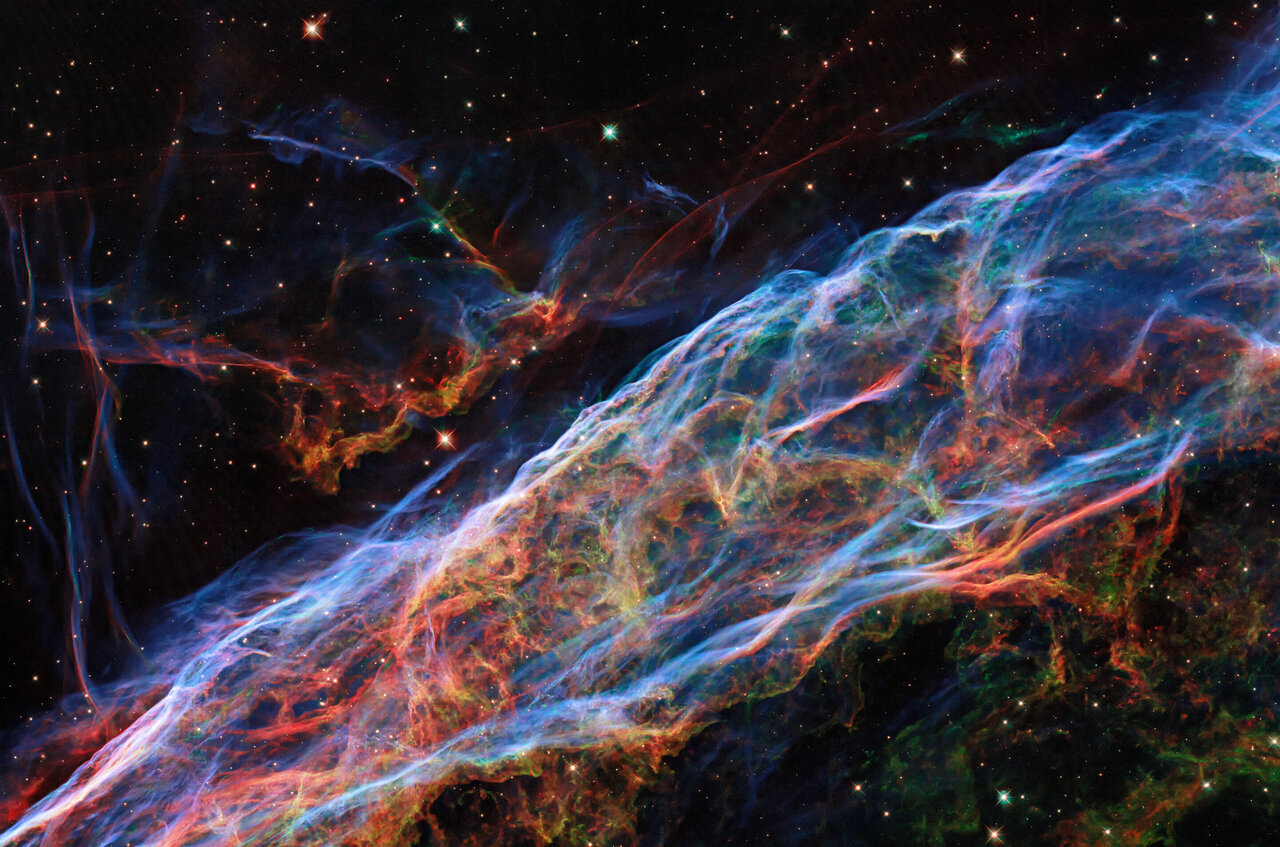
Image: Hubble revisits the Veil Nebula
This image taken by the NASA/ESA Hubble Space Telescope revisits the Veil Nebula, which was featured in a previous Hubble image release. In this image, new processing techniques have been applied, bringing out fine details of the nebula's delicate threads and filaments of ionized gas.
- Joined
- 21 January 2015
- Messages
- 12,150
- Reaction score
- 16,353
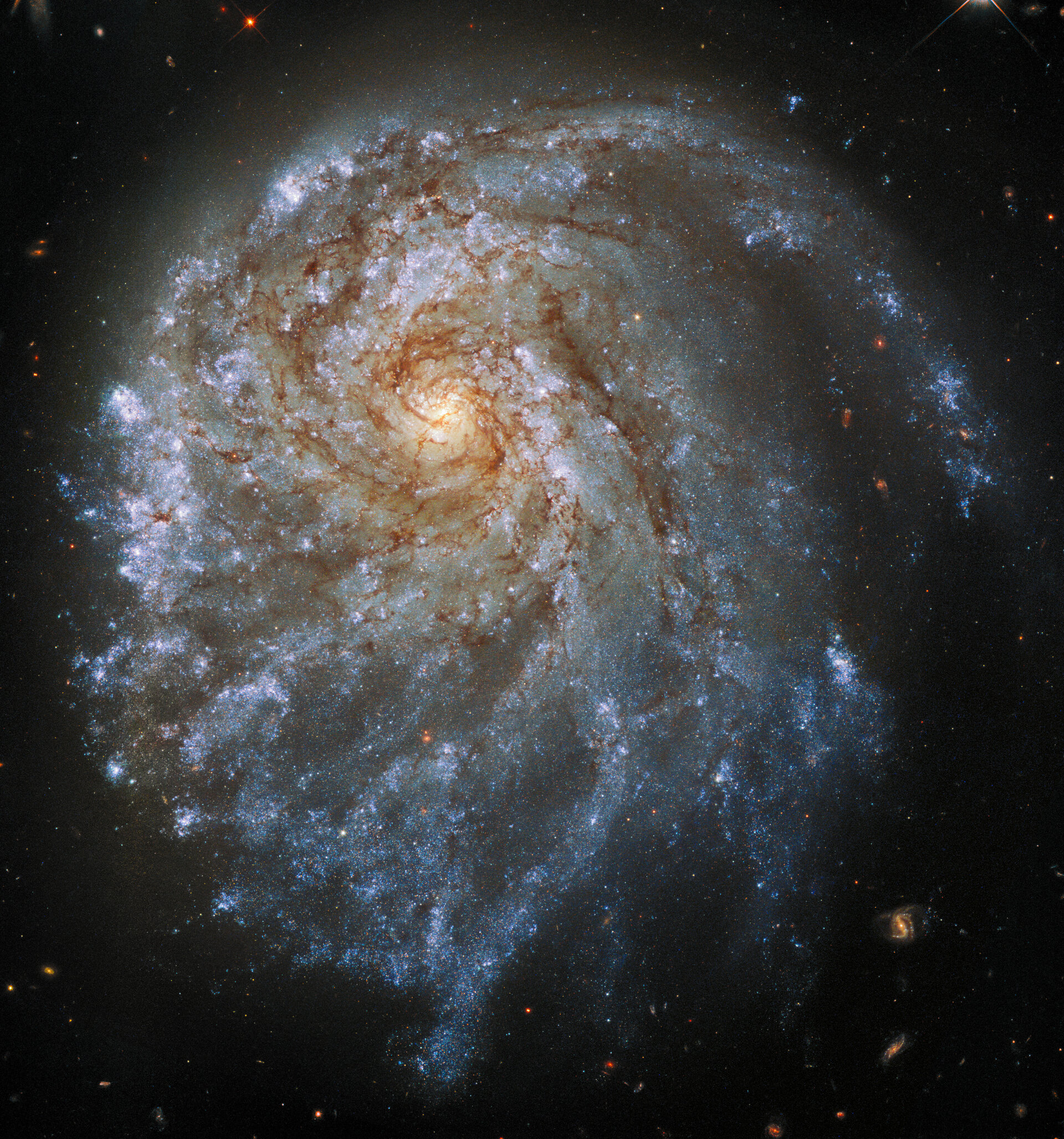
Hubble inspects a contorted spiral galaxy
www.esa.int
- Joined
- 9 October 2009
- Messages
- 21,973
- Reaction score
- 13,627
Via Slashdot:
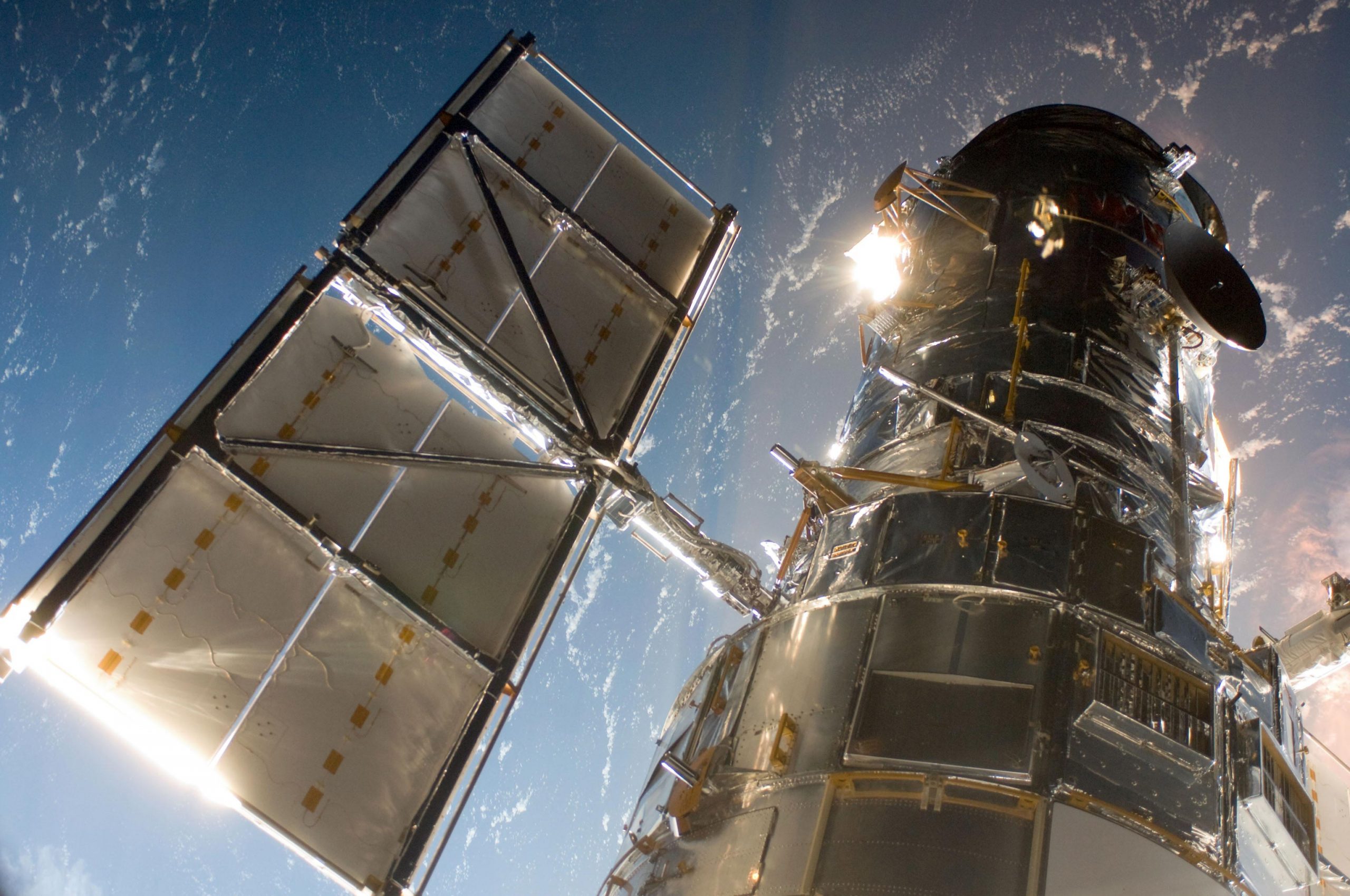

NASA Struggles to Fix Failure of Hubble Space Telescope's 1980s Computer
NASA continues to work on resolving an issue with the payload computer on the Hubble Space Telescope. The operations team will be running tests and collecting more information on the system to further isolate the problem. The science instruments will remain in a safe mode state until the issue is re
scitechdaily.com
- Joined
- 9 October 2009
- Messages
- 21,973
- Reaction score
- 13,627

Still-Troubled Hubble Space Telescope Once Snapped a Red, White, and Blue Image - Slashdot
For three weeks the "payload computer" has been down on NASA's Hubble Space Telescope, and "Without it, the instruments on board meant to snap pictures and collect data are not currently working," NPR recently reported. But as this weekend approached, NASA made an announcement... NASA...
science.slashdot.org
- Joined
- 9 October 2009
- Messages
- 21,973
- Reaction score
- 13,627
From earlier this month:
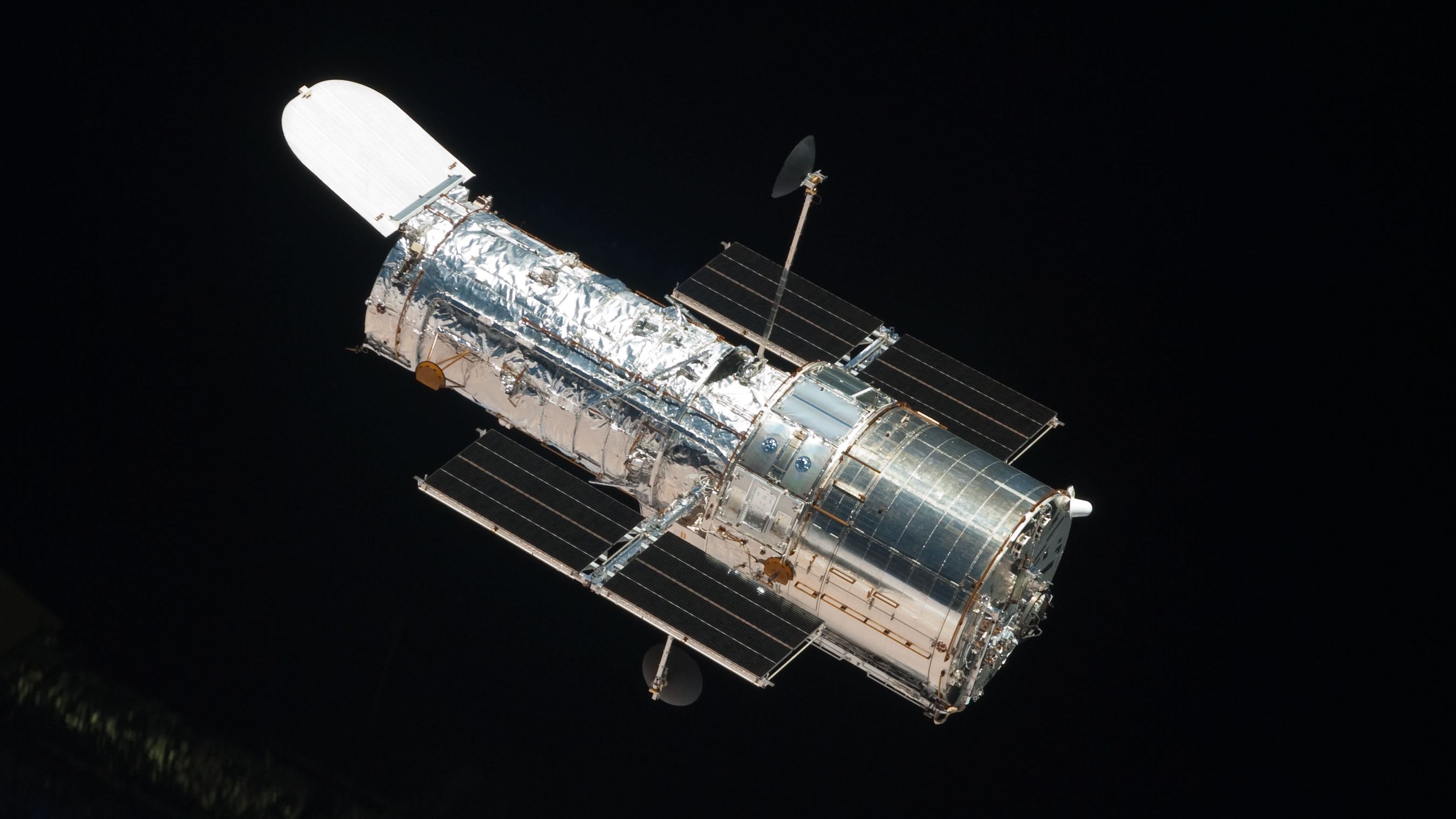
 hackaday.com
hackaday.com

The Trouble With Hubble: Payload Computer Glitch Stops Science At The Space Observatory
The Hubble Space Telescope’s remarkably long service life and its string of astonishing contributions to astronomy belie its troubled history. Long before its launch into low Earth orbit in 1…
- Joined
- 9 October 2009
- Messages
- 21,973
- Reaction score
- 13,627

NASA Revives Ailing Hubble Space Telescope With Switch To Backup Computer - Slashdot
The Hubble Space Telescope has powered on once again. NASA was able to successfully switch to a backup computer on the observatory on Friday following weeks of computer problems. From a report: On June 13, Hubble shut down after a payload computer from the 1980s that handles the telescope's...
science.slashdot.org
FighterJock
ACCESS: Above Top Secret
- Joined
- 29 October 2007
- Messages
- 5,607
- Reaction score
- 5,936

NASA Revives Ailing Hubble Space Telescope With Switch To Backup Computer - Slashdot
The Hubble Space Telescope has powered on once again. NASA was able to successfully switch to a backup computer on the observatory on Friday following weeks of computer problems. From a report: On June 13, Hubble shut down after a payload computer from the 1980s that handles the telescope's...science.slashdot.org
Let's hope that it works Grey Havoc. It would be sad to lose Hubble, I know that the James Webb Space Telescope is going to be launched in October but it would not be the same as Hubble.
- Joined
- 21 January 2015
- Messages
- 12,150
- Reaction score
- 16,353
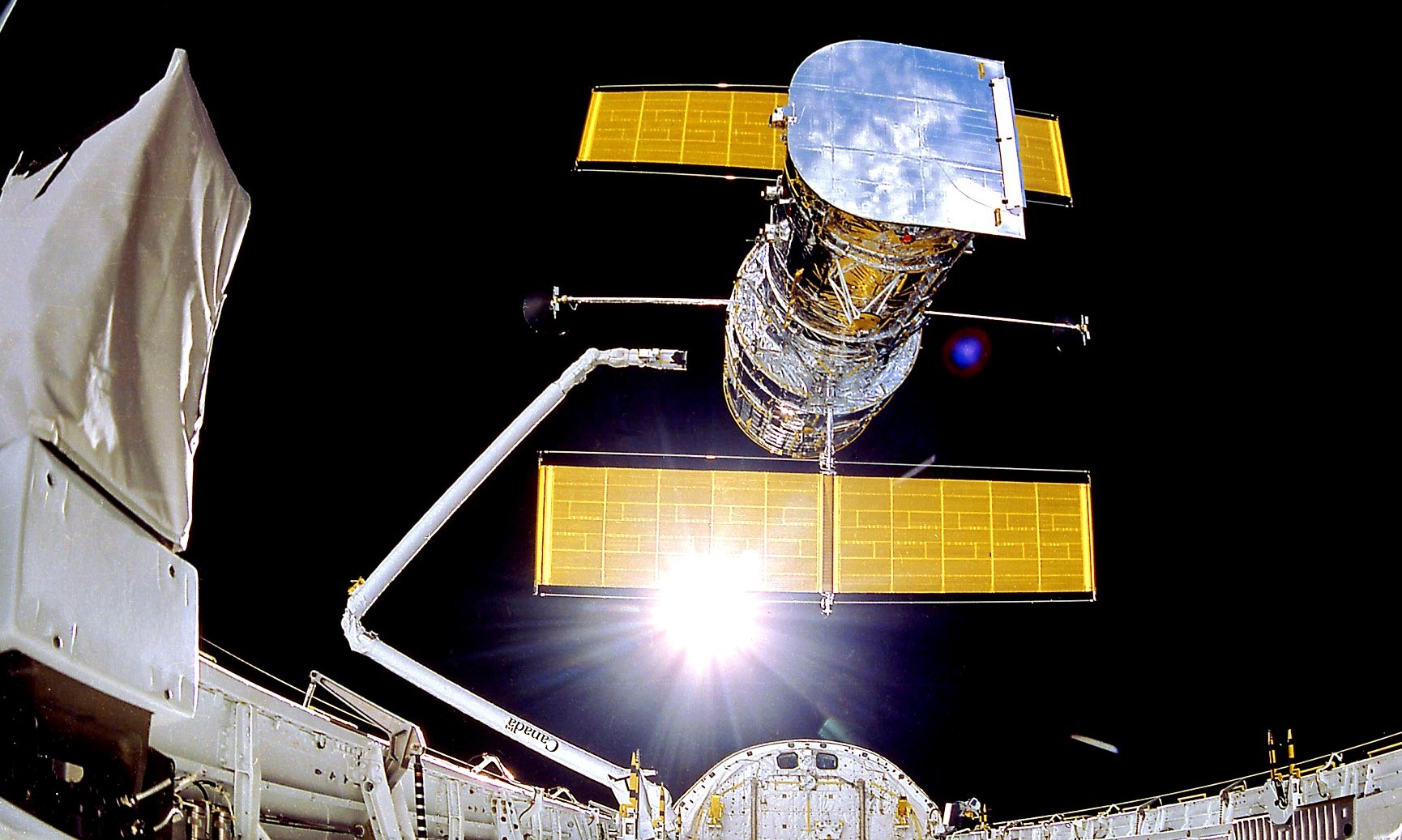
NASA Returns Hubble Space Telescope to Science Operations - NASA
Hubble has delivered new images since it started up again on July 16. Read more here.
View: https://twitter.com/Dr_ThomasZ/status/1417482703486730241?
FighterJock
ACCESS: Above Top Secret
- Joined
- 29 October 2007
- Messages
- 5,607
- Reaction score
- 5,936

NASA Returns Hubble Space Telescope to Science Operations - NASA
Hubble has delivered new images since it started up again on July 16. Read more here.www.nasa.gov
View: https://twitter.com/Dr_ThomasZ/status/1417482703486730241?
Well done NASA on fixing the Hubble Space Telescope. Touch wood there are no more problems before Hubble retires.
Since we have no other Hubble thread...
I am at lost, relative to NASA early space telescope studies.
There is OTAES and OTES: Apollo telescopes (attached documents, at least the not too big ones)
There is LTEP: Lockheed 2 m telescope eventually attached to a Skylab in place of ATM. (all of them too big, sorry)
And there is MOT: Boeing early 120-inch telescope study (next message)
I am at lost, relative to NASA early space telescope studies.
There is OTAES and OTES: Apollo telescopes (attached documents, at least the not too big ones)
There is LTEP: Lockheed 2 m telescope eventually attached to a Skylab in place of ATM. (all of them too big, sorry)
And there is MOT: Boeing early 120-inch telescope study (next message)
Attachments
NASAspaceflight thread with all the documents. By yours truly.
 forum.nasaspaceflight.com
forum.nasaspaceflight.com
Hubble pre-history: early Large Telescope Studies in the 1960's
Hubble pre-history: early Large Telescope Studies in the 1960's
- Joined
- 9 October 2009
- Messages
- 21,973
- Reaction score
- 13,627

Hubble telescope discovers 6 mysteriously dead, massive galaxies from early universe
The reason why these galaxies died during the universe's most prolific period of star birth is still a mystery.
'Double' Galaxy Mystifies Hubble Astronomers
Similar threads
-
Kissinger never gets to leave Germany
- Started by Justo Miranda
- Replies: 27
-
James Webb Space Telescope (Technical Post ONLY !)
- Started by Grey Havoc
- Replies: 640
-
-
-
What if Germany in 1900 had moved closer to the United States
- Started by uk 75
- Replies: 26
